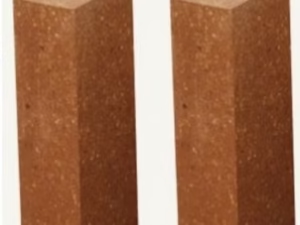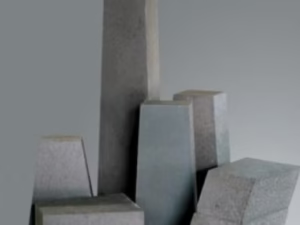Description
Phosphate Bonded Refractories: A Versatile Solution for High-Temperature Applications
Refractory materials are the unsung heroes of various industries, providing crucial protection against extreme temperatures and corrosive environments. While traditional refractories rely on ceramic bonds formed through high-temperature sintering, a specific class stands out for its unique bonding mechanism: Phosphate Bonded Refractories.
These refractories utilize phosphate compounds, typically based on phosphoric acid or its salts, as binders. Unlike the conventional high-temperature calcination process, phosphate bonding occurs at comparatively lower temperatures, offering a distinct set of advantages and opening up a wide range of applications.
How Phosphate Bonding Works:
The beauty of phosphate bonding lies in its chemical reaction. When a phosphate compound is mixed with refractory aggregates and water, it undergoes a hydration process, forming a strong, amorphous, and adhesive matrix. This matrix binds the refractory particles together, creating a solid and cohesive structure. The specific binding mechanism is complex and involves a combination of factors, including:
- Acid-base reactions: The phosphate acts as an acidic binder, reacting with the basic or neutral components of the refractory mix.
- Precipitation of insoluble phosphates: These precipitated phosphates form a network that reinforces the bond.
- Gel formation: A gel-like phase can develop, providing initial strength and promoting further reaction.
This process allows for the creation of strong bonds at temperatures significantly lower than those required for ceramic bonding, often below 300°C.
Advantages of Phosphate Bonded Refractories:
Phosphate bonded refractories offer several key benefits, making them a compelling choice for specific applications:
- Lower Firing Temperatures: This translates to reduced energy consumption and faster production cycles, making them more cost-effective.
- High Cold Crushing Strength: Phosphate bonding provides excellent initial strength, allowing for easy handling and installation.
- Good Resistance to Thermal Shock: The amorphous nature of the phosphate bond contributes to improved resistance to sudden temperature changes.
- Versatile Application Methods: These refractories can be used in various forms, including castables, ramming mixes, and mortars, offering flexibility in application.
- Excellent Adhesion: The phosphate bond provides excellent adhesion to other refractory materials and even metals, facilitating repair and maintenance.
- Resistance to Certain Corrosive Environments: Phosphate bonded refractories can exhibit good resistance to specific corrosive environments, such as acidic atmospheres.
Limitations of Phosphate Bonded Refractories:
While offering numerous advantages, phosphate bonded refractories also have limitations:
- Susceptibility to Hydration: The phosphate bond can degrade in the presence of excessive moisture at elevated temperatures, potentially leading to weakening of the structure.
- Limited Thermal Stability: While they perform well at moderate temperatures, their strength and performance can decline at extremely high temperatures exceeding their service limitations.
- Potential for Phosphate Migration: Under certain conditions, phosphate can migrate within the refractory structure, potentially affecting its properties.
Applications of Phosphate Bonded Refractories:
The unique properties of phosphate bonded refractories make them suitable for a wide array of applications, including:
- Kiln Furniture: Shelves, saggers, and other components used in various types of kilns.
- Furnace Linings: In applications where resistance to acidic slags or lower operating temperatures are required.
- Aluminum Melting Furnaces: As linings for ladles and melting furnaces due to their resistance to wetting by molten aluminum.
- Cement Industry: For lining preheater towers and other equipment.
- Incinerators: Linings for incinerators dealing with specific waste streams.
- Investment Casting: As a binder for investment casting molds.
- Gunning Mixes and Repair Materials: For rapid repair of damaged refractory linings.
Future Trends:
The development of phosphate bonded refractories is an ongoing process. Future research focuses on:
- Improving High-Temperature Performance: Modifying the phosphate chemistry and incorporating additives to enhance stability at higher temperatures.
- Enhancing Hydration Resistance: Developing protective coatings or modifying the binder composition to improve resistance to moisture.
- Exploring Novel Phosphate Binders: Investigating alternative phosphate compounds and their potential for enhanced performance.
- Developing Tailored Formulations: Creating specialized formulations optimized for specific applications and environments.
Conclusion:
Phosphate bonded refractories provide a valuable alternative to traditional ceramic bonded refractories, offering a unique combination of properties that make them suitable for a broad range of applications. Their lower firing temperatures, high cold crushing strength, and good thermal shock resistance make them a compelling choice for industries seeking cost-effective and reliable refractory solutions. As research continues to improve their performance and address their limitations, phosphate bonded refractories are poised to play an even greater role in the future of high-temperature processing.

















Reviews
There are no reviews yet.